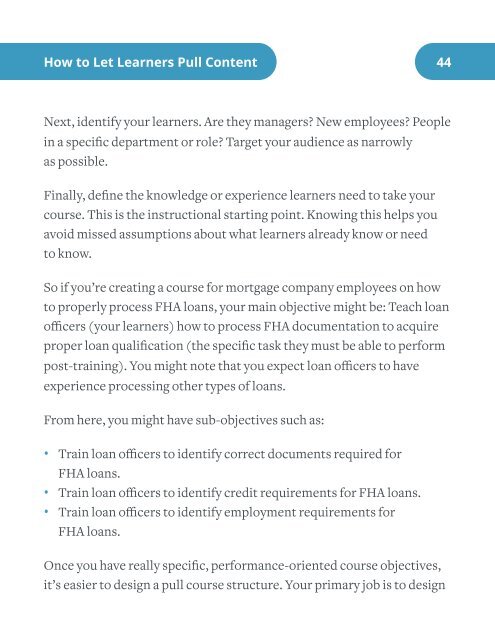Articulate_5_Highly_Effective_Strategies_for_Creating_Engaging_E-Learning_v7
You also want an ePaper? Increase the reach of your titles
YUMPU automatically turns print PDFs into web optimized ePapers that Google loves.
Title How to Let Learners Pull Content 44<br />
Next, identify your learners. Are they managers? New employees? People<br />
in a specific department or role? Target your audience as narrowly<br />
as possible.<br />
Finally, define the knowledge or experience learners need to take your<br />
course. This is the instructional starting point. Knowing this helps you<br />
avoid missed assumptions about what learners already know or need<br />
to know.<br />
So if you’re creating a course <strong>for</strong> mortgage company employees on how<br />
to properly process FHA loans, your main objective might be: Teach loan<br />
officers (your learners) how to process FHA documentation to acquire<br />
proper loan qualification (the specific task they must be able to per<strong>for</strong>m<br />
post-training). You might note that you expect loan officers to have<br />
experience processing other types of loans.<br />
From here, you might have sub-objectives such as:<br />
• Train loan officers to identify correct documents required <strong>for</strong><br />
FHA loans.<br />
• Train loan officers to identify credit requirements <strong>for</strong> FHA loans.<br />
• Train loan officers to identify employment requirements <strong>for</strong><br />
FHA loans.<br />
Once you have really specific, per<strong>for</strong>mance-oriented course objectives,<br />
it’s easier to design a pull course structure. Your primary job is to design


